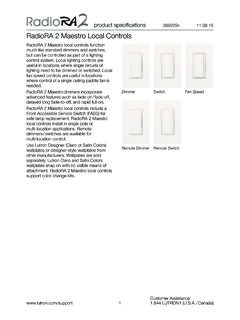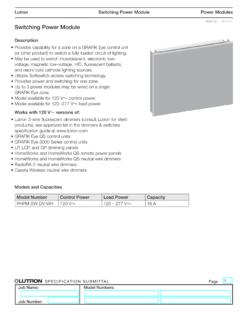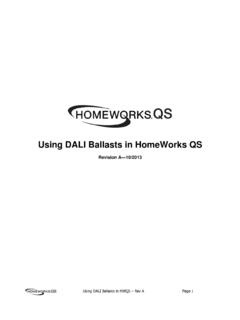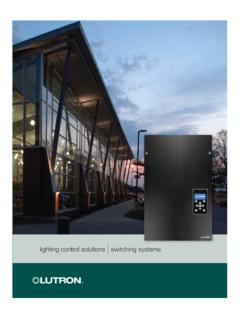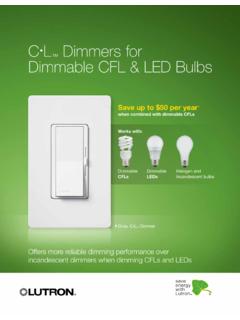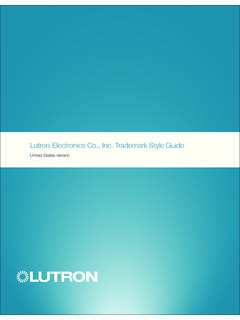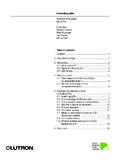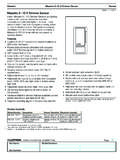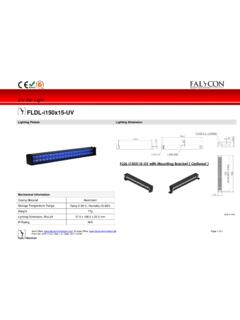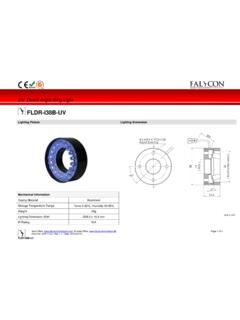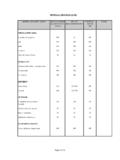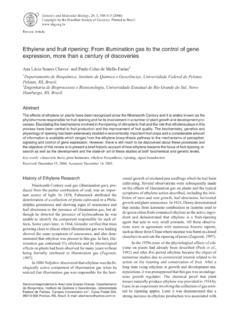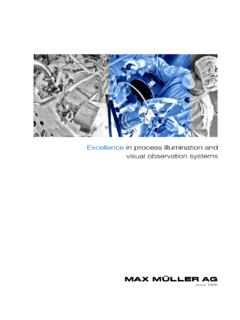Transcription of Technical Report Illumination Control Overview for Vivaria ...
1 Technical ReportIllumination Control Overview for VivariaLutron Electronics Co., Inc. July 15, 2016 07/2016 Lutron Electronics Co., Inc. I P/N 367-2652 REV ATechnical ReportIllumination Control Overview for VivariaTM2 | Lutron1) Abstract2) Executive summary3) Introduction a) What is a vivarium b) What is unique about vivarium lighting4) Common design concerns 14 essential considerations5) How to design a lighting Control system a) Choosing a server b) Independent subsystems c) Reporting requirements d) Emergency backup e) Wired vs.
2 Wireless f) Testing and research requirements g) Remote access h) Service contracts6) Conclusion7) Appendices a) Key Players b) Guidelines and Standards c) Illumination Requirements and Recommendationsi) ILARii) NIHiii) CCACiv) FDAT echnical ReportIllumination Control Overview for VivariaTM3 | Lutron Abstract Vivaria typically represent a relatively small piece of a larger application, and because the lighting requirements are typically so different from the rest of the project, vivarium lighting specifications can be particularly challenging.
3 Specifiers may jeopardize their success with the total job because they do not have expertise in this one, specific aspect of lighting design. I n this whitepaper we will Define vivarium and discuss their unique lighting requirements Present and discuss specific questions to ask to prepare an appropriate lighting specification Identify lighting systems designs that minimize risk and help ensure reliability and functionality within the facility Look into the regulatory requirements and Illumination recommendations. The goal of this whitepaper is to help lighting professionals with extensive lighting design experience, but little or no experience with Vivaria , specify an appropriate lighting Control system with confidence.
4 Executive Summary I llumination guidelines for Vivaria have been established by various organizations including the National Institutes of Health (NIH), the Institute for Animal Laboratory Research (ILAR), and the Canadian Council on Animal Care (CCAC). In addition, although the FDA does not specifically regulate lighting Control in Vivaria , the presence of appropriate lighting Control systems enhances facility integrity, and is therefore a factor in achieving a positive judgment by the FDA. By asking the right questions at the beginning of the design process, and working with a lighting Control manufacturer who can offer both the lighting Control solutions and the in-depth knowledge of vivarium Control , specifiers will be able to identify the right combination of required lighting Control strategies including one or more of the following.
5 Operator Control stations Advanced BMS integration Full-range dimming Time clock Time clock catch-up Override timer Individual lamp Control Light level monitoring Alarm Historical data retention Shade controlTechnical ReportIllumination Control Overview for VivariaTM4 | Lutron What is a Vivarium? A vivarium is a place, such as a laboratory, where live animals or plants are kept under conditions simulating their natural environment, as for research. I n a vivarium, a portion of the ecosystem for a particular species is simulated on a smaller scale, with controls for environmental conditions.
6 This whitepaper is focused on the type of animal facilities typically found in medical research, pharmaceutical companies, and universities. A typical vivarium is made up of Animal Holding Rooms, Procedure Rooms, Cage Wash Area, Feed Storage Room, and Bedding Storage Rooms. Lighting Control is most critical in the Animal Holding Rooms and Procedure Rooms. Most Vivaria are not stand-alone buildings, but rather sections (usually confined to a single floor) of a larger building. The special environmental requirements of the vivarium space are not generally representative of the rest of the building, and neither is the Control over that environment.
7 While the rest of the building s environment is the responsibility of the end user and the end user s facility group, day-to-day Control of the vivarium is the usually the responsibility of the research team. Technical ReportIllumination Control Overview for VivariaTM5 | Lutron Lighting manufacturers frequently work with the Architects, Lighting Designers, Electrical Engineers, and Electrical Contractors - professionals who are familiar with lighting Control requirements for most types of buildings but frequently have little or no experience with lighting design and Control requirements for Vivaria .
8 The risk in applying traditional, commercial lighting Control design to Vivaria is in delivering a system that cannot comply with the research team s needs, often leading to significant additional costs and struggles with responsibility for those costs. It is critical to work with a lighting Control manufacturer with a working knowledge of vivarium requirements, and the ability to propose and implements complementary lighting Control solutions. This whitepaper will contribute to an informed dialog that can be used to achieve an appropriate lighting specification, alleviate callbacks and revisions, or ultimately avoid lighting systems that do not adequately support scientific ReportIllumination Control Overview for VivariaTM6 | Lutron Essential Design Considerations No two Vivaria are exactly alike.
9 Unique research demands unique lighting and Control protocols. The answers to these questions will help to frame up the right specification, work to reduce additional costs due to last minute changes, and will help ensure that all critical issues have been Each holding and procedure room will generally have a unique sequence of operations. A written sequence of operations, agreed upon by the research team prior to a systems quotes, for each room type in the space holding rooms, procedure rooms, cage wash area, feed storage/bedding storage room will help establish the required lighting Control strategies.
10 System considerations The necessary Sequence of Operation (see page xx) for overrides, time clocks, and BMS integration is usually very advanced compared to the rest of the building. There are also special requirements for time clocks or BMS integration. Advanced conditionals, sequences, and extensive use of state variables may also be required. Choose a total light management system that allows for additional programming both off and on Vivaria often require a lighting Control system that is independent of the overall facility/building. Determine whether the lighting Control system can be integral to the rest of the building lighting system, and if so, will you need to establish separate user rights or overrides for the research team?
